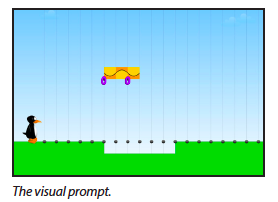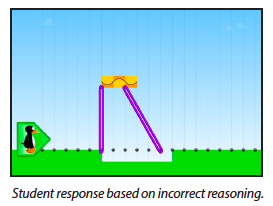
Teaching middle school math is challenging! Teachers deal with adolescent volatility, a wide variance in student ability, and a surprisingly sophisticated set of mathematical ideas. Adding to these challenges, the new Common Core assessments probe students’ understanding of mathematical concepts at a depth not previously widespread on State tests. To combat this, teachers need sophisticated instructional materials that not only build students’ conceptual understanding, but also engage and challenge all students at this critical time in their personal, social and mathematical development.
Most instructional materials are designed to replicate traditional teaching methodologies, where mathematics is effectively reduced to the art of “answer getting”. Given that teachers likely will have learned math in this way it is hard to leave that familiar comfort zone. The trick is to seek out instructional materials that focus on and engage students in learning by doing - where making mistakes is considered a critical part of the learning process and problem solving with visual models and manipulatives is interwoven into everyday instruction.
ST Math provides tools to support precisely that kind of rigorous learning environment enabling teachers to implement critical thinking activities in every classroom. With the ST Math program, students develop their Spatial Reasoning skills as they solve visual mathematics problems that get at the core conceptual understanding of the new State and Common Core Standards. For example, one of the major topics introduced to students in 6th and 7th grades is Proportional Reasoning. A typical question might read something like “To make three apple pies you need two pounds of apples. How many pounds of apples would you need to make 6 pies?” In a traditional “answer getting” approach to this topic, students would be taught how to translate the word problem into a proportion, like this…

…and then solve for the unknown term, x. While this approach yields the correct answer, it does practically nothing to develop a student’s intuition about how this concept works or what proportional growth looks and feels like. And even though the problem can be classed as a “real world” problem it has little relevance to most students and hence is not genuinely engaging.
ST Math: Middle School Supplement takes an entirely different approach and presents students with a challenging visual puzzle: figure out which pegs to place the rubber bands on in order to stretch the yellow and orange striped block to fill the hole in the ground so that the penguin can cross the screen.

There are no hints, no written explanations, but an unlimited number of “trys” at solving this or similar puzzles. It is likely, and desired, that students will make mistakes as they apply their existing reasoning skills built in earlier grade levels. For example, they reason that because the rubber band on the right is one space away from the end of the block, the band needs to be dragged to one space away from the end of the hole in the ground.
Through persistence and seeing how the game animates the growth of the block, the light bulb turns on and students realize the block needs to be stretched to twice its original length. It’s a new way of seeing growth for the students. It’s multiplicative, not additive.
These types of visual manipulative problem solving activities serve as powerful tools to help all students build the necessary depth of conceptual understanding to tackle the new assessments. They also are great motivators of classroom discussion where students are engaged by the challenge and have an innate desire to “figure it out.”
This post was previoiusly published in District Administration.

Nigel Nisbet is the Vice President of Content Creation at MIND Education, a non-profit organization dedicated to equipping all students to solve the world's most challenging problems. He is also the author of the E-book “I think, I try, I learn” and presenter of the TEDx talk “The Geometry of Chocolate."
Comment